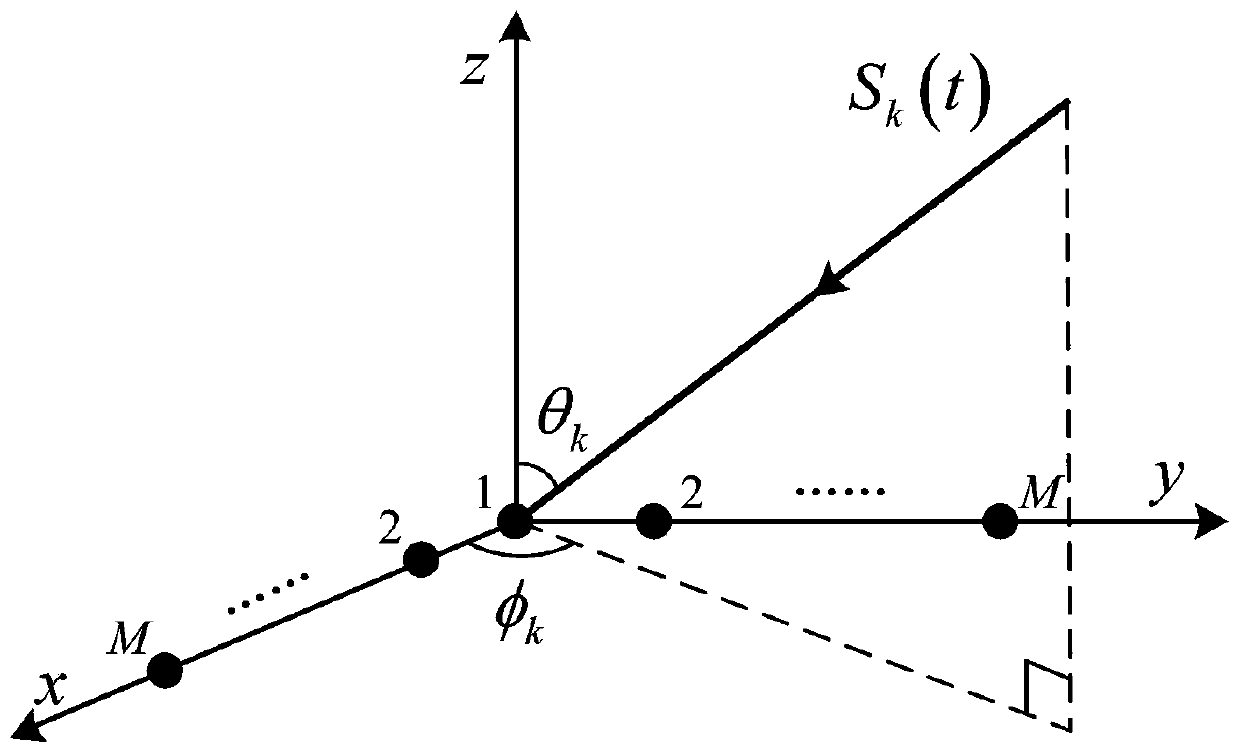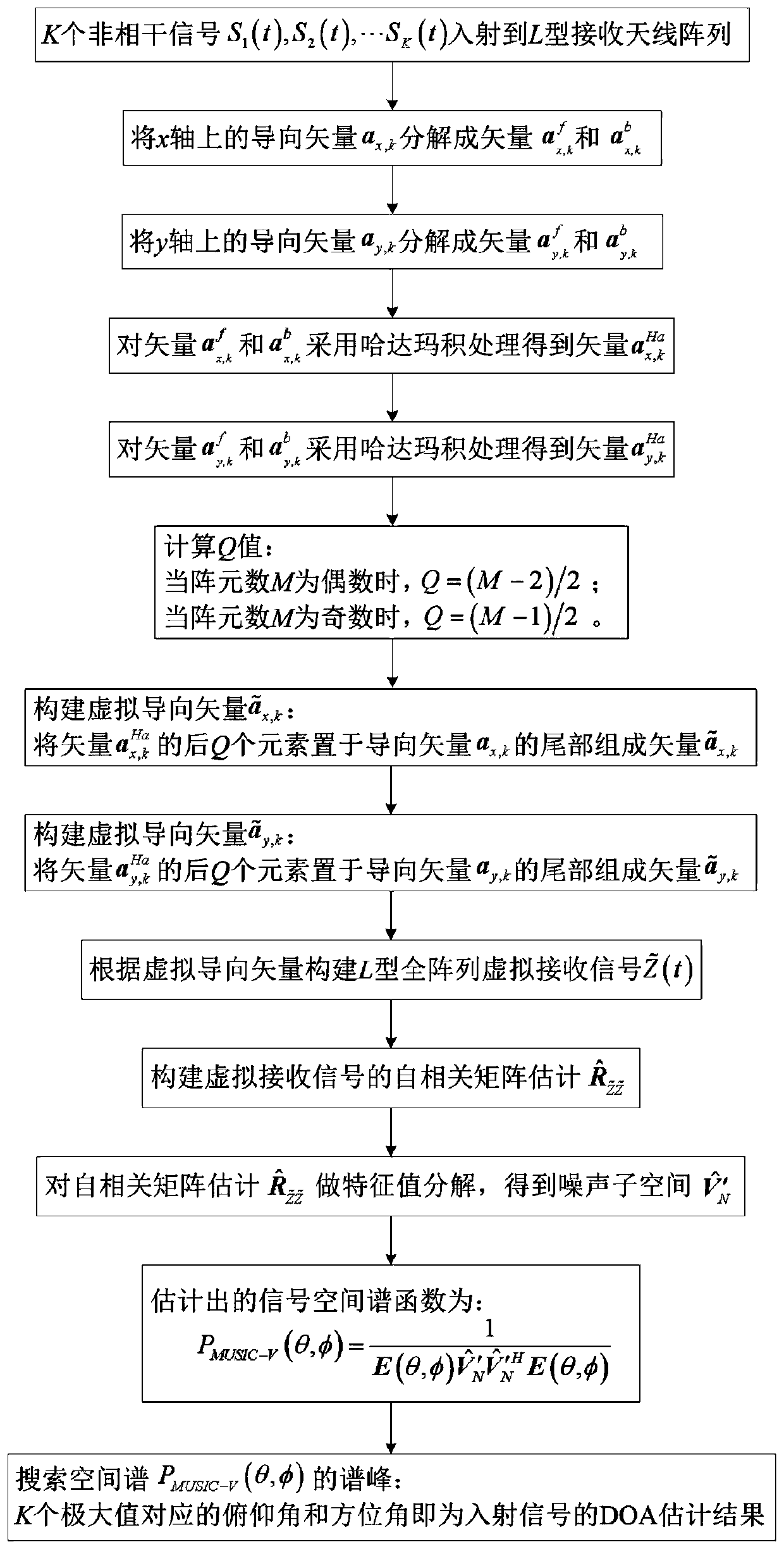Two-dimensional DOA estimation method based on L-shaped array
An array and L-shaped technology, which is applied in the field of array signal angle estimation, can solve problems such as unsolvable underdetermined problems and estimated signals, increased equipment complexity and cost, and complex structure of coprime arrays.
- Summary
- Abstract
- Description
- Claims
- Application Information
AI Technical Summary
Problems solved by technology
Method used
Image
Examples
Embodiment Construction
[0053] The following will clearly and completely describe the technical solutions in the embodiments of the present invention with reference to the accompanying drawings in the embodiments of the present invention. Obviously, the described embodiments are only some, not all, embodiments of the present invention. Based on the embodiments of the present invention, all other embodiments obtained by persons of ordinary skill in the art without creative efforts fall within the protection scope of the present invention.
[0054] refer to Figure 1-2 : The present invention provides a kind of technical scheme: a kind of two-dimensional DOA estimation method based on L-shaped array, comprises the following steps:
[0055] Step 1: Establish a time-domain model of array reception;
[0056] Suppose K uncorrelated far-field narrowband signals S 1 (t),S 2 (t),...S K (t) by pitch angle θ k (k=1,2,...,K) and azimuth φ k (k=1,2,...,K) is incident on an L-shaped receiving antenna array a...
PUM
 Login to View More
Login to View More Abstract
Description
Claims
Application Information
 Login to View More
Login to View More - R&D
- Intellectual Property
- Life Sciences
- Materials
- Tech Scout
- Unparalleled Data Quality
- Higher Quality Content
- 60% Fewer Hallucinations
Browse by: Latest US Patents, China's latest patents, Technical Efficacy Thesaurus, Application Domain, Technology Topic, Popular Technical Reports.
© 2025 PatSnap. All rights reserved.Legal|Privacy policy|Modern Slavery Act Transparency Statement|Sitemap|About US| Contact US: help@patsnap.com



